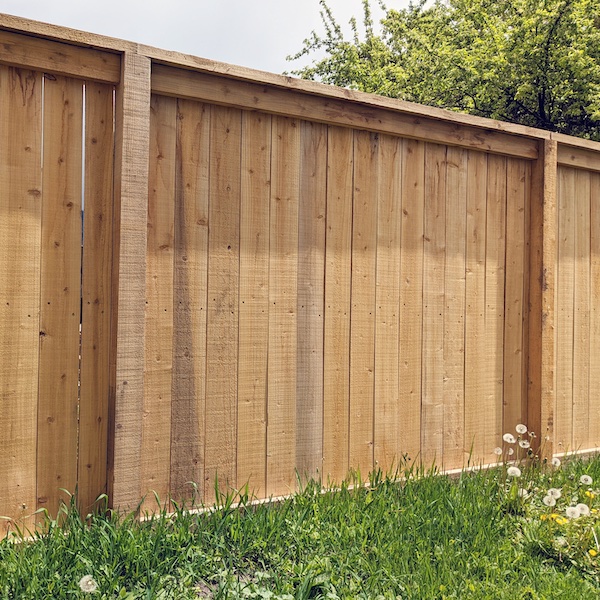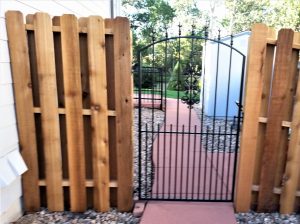All Categories
Featured

As sustainability becomes a growing top priority for house owners and companies, the need for green structure products prolongs to outside areas, including fences. Typical fence materials such as vinyl, steel, and wood can have significant environmental influences, from deforestation to chemical treatments and plastic waste. Nevertheless, there are several green fence choices available that not only reduce the carbon footprint but additionally provide longevity and visual allure. Allow's explore some of the most preferred and sustainable fence materials that can help you go eco-friendly while still boosting your property's privacy, design, and protection.
- Bamboo Secure fencing. Bamboo is just one of one of the most lasting materials on the market, and it is progressively made use of in fencing construction as a result of its fast growth and stamina. Unlike hardwood trees, bamboo is a turf that can grow back completely within simply a couple of years, making it very eco-friendly. It's naturally resistant to pests and rot, which implies it doesn't require extreme chemicals or treatments, making it an environmentally friendly choice.

Perks: Bamboo fencings are sturdy, low-maintenance, and biodegradable. They are normally resistant to termites and dampness, minimizing the requirement for chemical preservatives. Additionally, bamboo aids reduce dirt erosion due to its deep root systems. Factors to consider: Bamboo can be extra pricey than some typical timber secure fencing alternatives, and it may not be suitable for locations with extreme cool or freezing temperature levels, as it can come to be fragile in time. 2. Recycled Products Fencing. Secure fencing made from recycled products is an amazing means to advertise sustainability. Many suppliers currently use fencings made from post-consumer plastic, recycled timber, or also repurposed metal. By selecting fence made from recycled materials, you lower the need for new sources and help protect against waste from winding up in land fills. Several composite products, for instance, are made from recycled plastic bottles, timber scraps, and other materials that would certainly otherwise be thrown out.
Conveniences: Recycled material fences assist conserve all-natural resources, lower pollution, and reduced the ecological impact of the manufacturing procedure. They can additionally provide outstanding toughness, standing up to degeneration, mold and mildew, and termites. Considerations: While recycled material fences are green and very sturdy, they may not have the very same natural aesthetic that some homeowners look for. Nonetheless, suppliers currently use styles that mimic the look of timber or stone. 3. Compound Secure fencing. Composite fencing is made from a blend of wood fibers and plastic, commonly including recycled materials. This combination develops a highly resilient, low-maintenance fence that does not require normal painting or staining, making it a lasting option. Composite fencings are immune to rot, bugs, and weathering, which means they can last for years without the requirement for frequent replacements.

Benefits: Composite fencings are lasting and can endure extreme weather, reducing the demand for substitutes or repair services. Given that composite materials often include recycled content, they help in reducing plastic waste. Additionally, they do not call for dangerous chemicals or therapies. Factors to consider: Composite fences can have a higher upfront cost than standard wood or plastic, though their longevity and reduced maintenance expenses usually make them a more economical choice over time. 4. Living Fencings. Living fences, also called hedgerows, are a green and visually pleasing choice that entails planting dense bushes, trees, or climbing up plants along your property line to develop an all-natural obstacle. Popular plants for living fencings consist of boxwood, privet, and holly. These plants can be expanded to provide personal privacy, windbreaks, and noise decrease while adding to environmental health and wellness.
Advantages: Living fences promote biodiversity, improve air high quality, and take in carbon dioxide, making them among the most eco-friendly fence options. They additionally provide a natural environment for birds and bugs and can reduce noise contamination and help manage temperature levels in your yard. Factors to consider: Living fencings require routine maintenance, such as cutting, watering, and often pest control. They additionally take some time to establish and might not provide immediate privacy contrasted to strong timber or plastic fencings. 5. Cedar and Redwood Fence. Cedar and redwood are prominent natural wood choices for fencings. These materials are sturdy and naturally resistant to rot, insects, and dampness, which means they commonly don't call for using unsafe chemical therapies. When sourced from sustainably taken care of forests, cedar and redwood fences can be an environmentally pleasant selection that gives both appeal and long life.
Benefits: These woods are naturally degradable, eco-friendly, and offer exceptional longevity and natural charm. Cedar and redwood likewise have a reduced environmental influence when harvested responsibly, making them a green option for several house owners. Considerations: While cedar and redwood fences have environmental benefits, they do still need periodic upkeep and are extra pricey than other timber options. It's crucial to make sure that the wood is sourced from lasting woodlands to optimize its ecological advantages. 6. Rock and Block Secure Fencing (Recovered) Rock and block fences are low-maintenance and incredibly long lasting, and they can be green when made from recovered products. Recovered rock and brick are usually salvaged from old buildings or construction jobs, lowering waste and conserving all-natural sources. These products supply a timeless look and are very resistant to weathering, making them a long-lasting solution for fencing.
Perks: Recovered rock and block are durable, aesthetically pleasing, and call for marginal upkeep. By repurposing these products, you help minimize the demand for new sources and lower waste in garbage dumps. Factors to consider: The installation of rock and brick fences can be labor-intensive and a lot more pricey compared to various other products, but their durability and reduced upkeep requirements can make them affordable in the long run. Verdict. Eco-friendly fencing alternatives are not only great for the environment but likewise use resilience, low maintenance, and aesthetic charm. Whether you select bamboo, recycled materials, composite secure fencing, living fences, or sustainable wood like cedar and redwood, there are several methods to lower your environmental impact while boosting your residential or commercial property's appearance. By choosing these eco-conscious materials, you can add to a healthier planet and develop an outdoor space that shows your values.
Latest Posts
Why Regular Vehicle Maintenance at Montclare Auto Repair Keeps Your Wallet Happy
Published May 27, 25
1 min read
Professional Residential Roof Covering Solutions You Can Depend On
Published May 26, 25
1 min read
Picking the Right Roof Covering Color: Influence On Energy Effectiveness
Published May 24, 25
1 min read
More
Latest Posts
Why Regular Vehicle Maintenance at Montclare Auto Repair Keeps Your Wallet Happy
Published May 27, 25
1 min read
Professional Residential Roof Covering Solutions You Can Depend On
Published May 26, 25
1 min read
Picking the Right Roof Covering Color: Influence On Energy Effectiveness
Published May 24, 25
1 min read